Abstract
The structural gene for the human lysosomal enzyme aspartylglucosaminidase (AGA) has been assigned to chromosome 4 using somatic cell hybridization techniques. The human monomeric enzyme was detected in Chinese hamster-human cell hybrids by a thermal denaturation assay that selectively inactivated the Chinese hamster isozyme, while the thermostable human enzyme retained activity. Twenty informative hybrid clones, derived from seven independent fusions, were analyzed for the presence of human AGA activity and their human chromosomal constitutions. Without exception, the presence of human AGA in these hybrids was correlated with the presence of human chromosome 4. All other human chromosomes were excluded by discordant segregation of the human enzyme and other chromosomes. Two hybrid clones, with interspecific Chinese hamster-human chromosome translocations involving the long arm of human chromosome 4, permitted the assignment of human AGA to the region 4q21----4qter.
Full text
PDF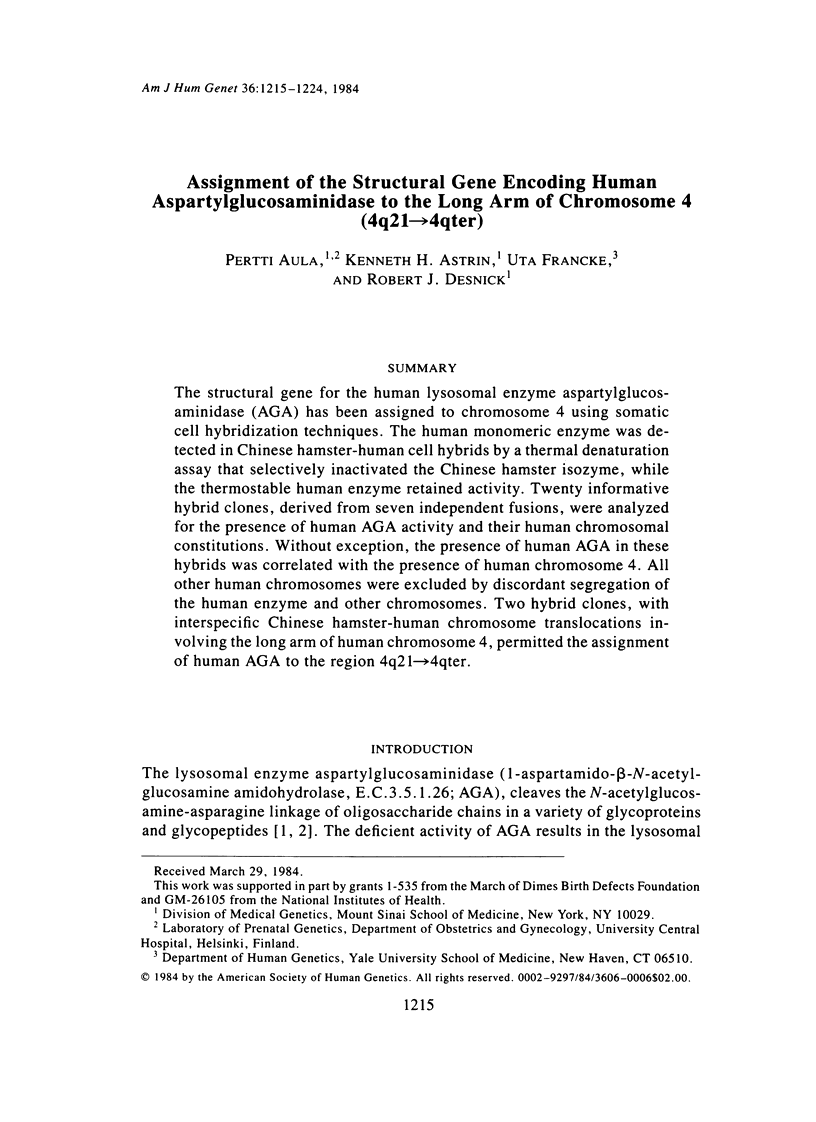
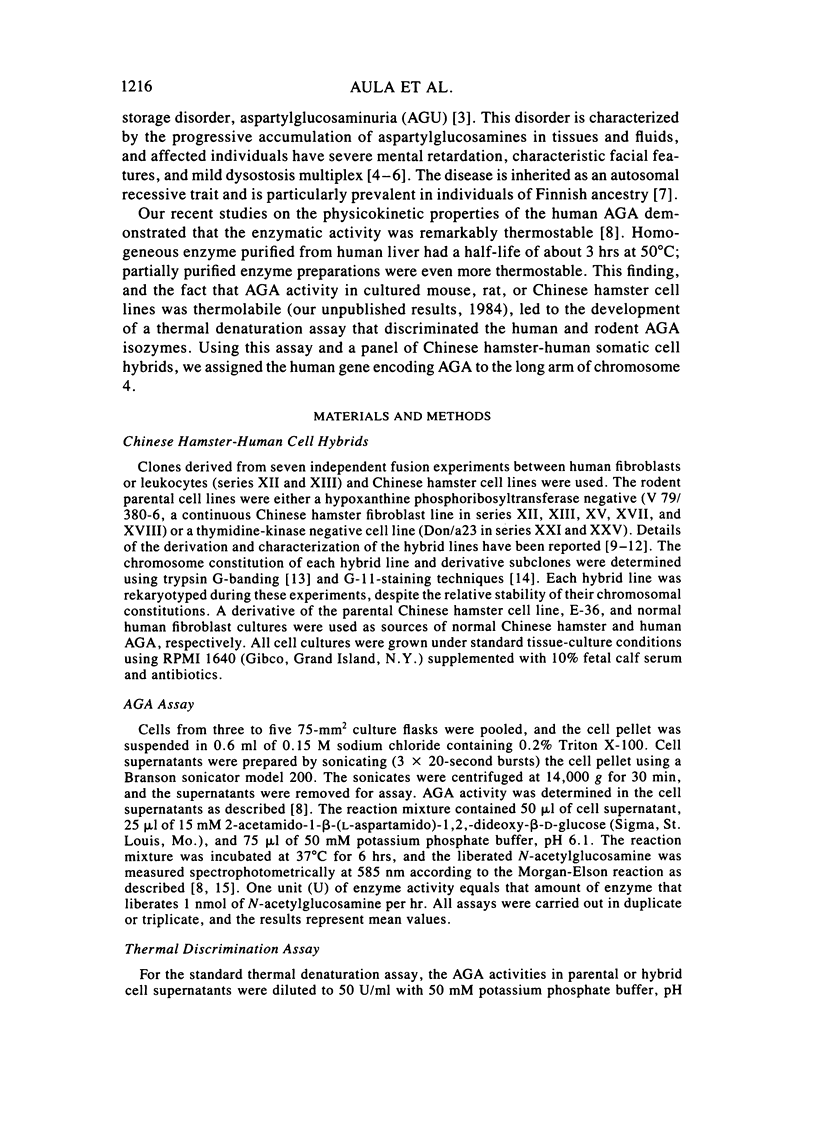

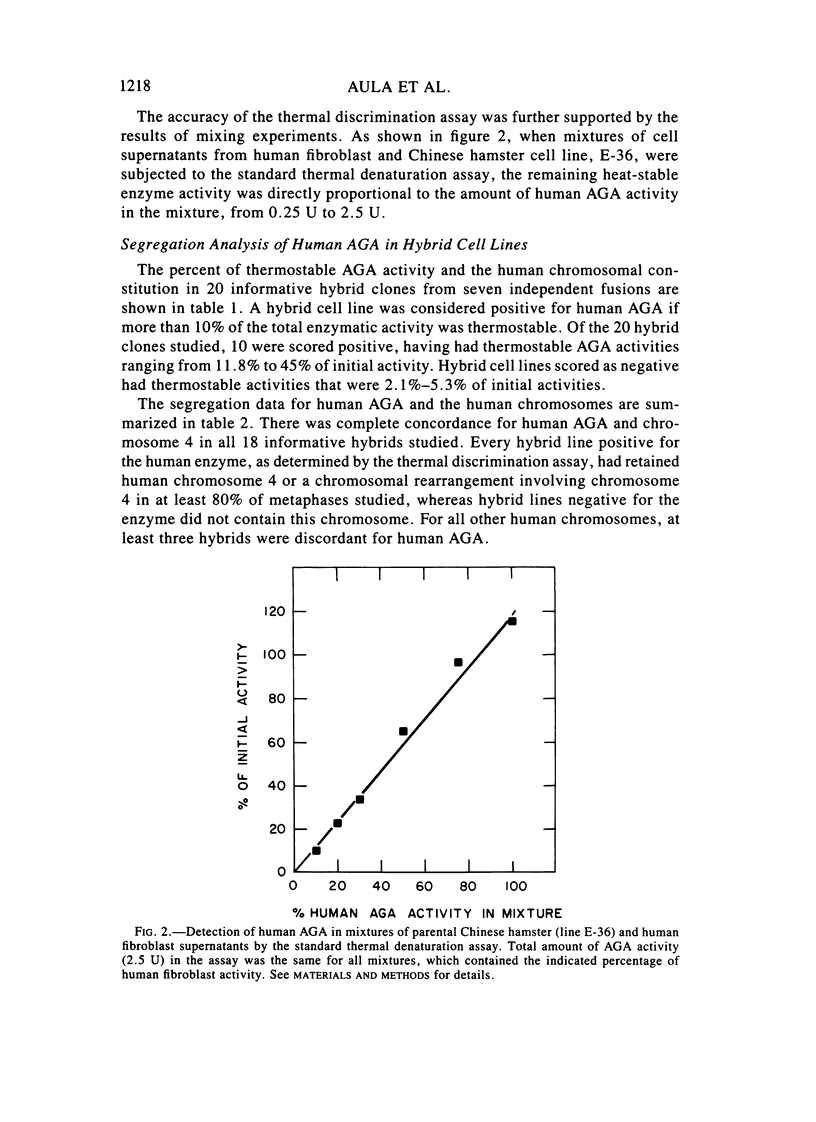
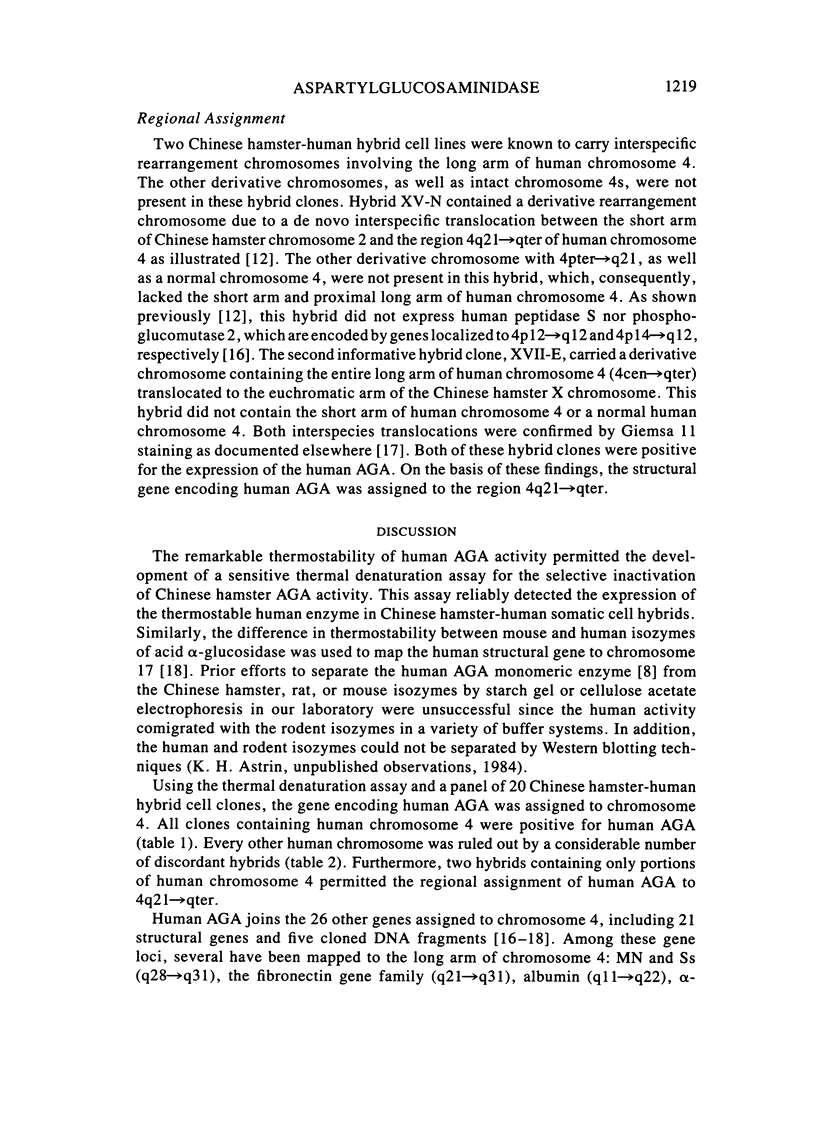
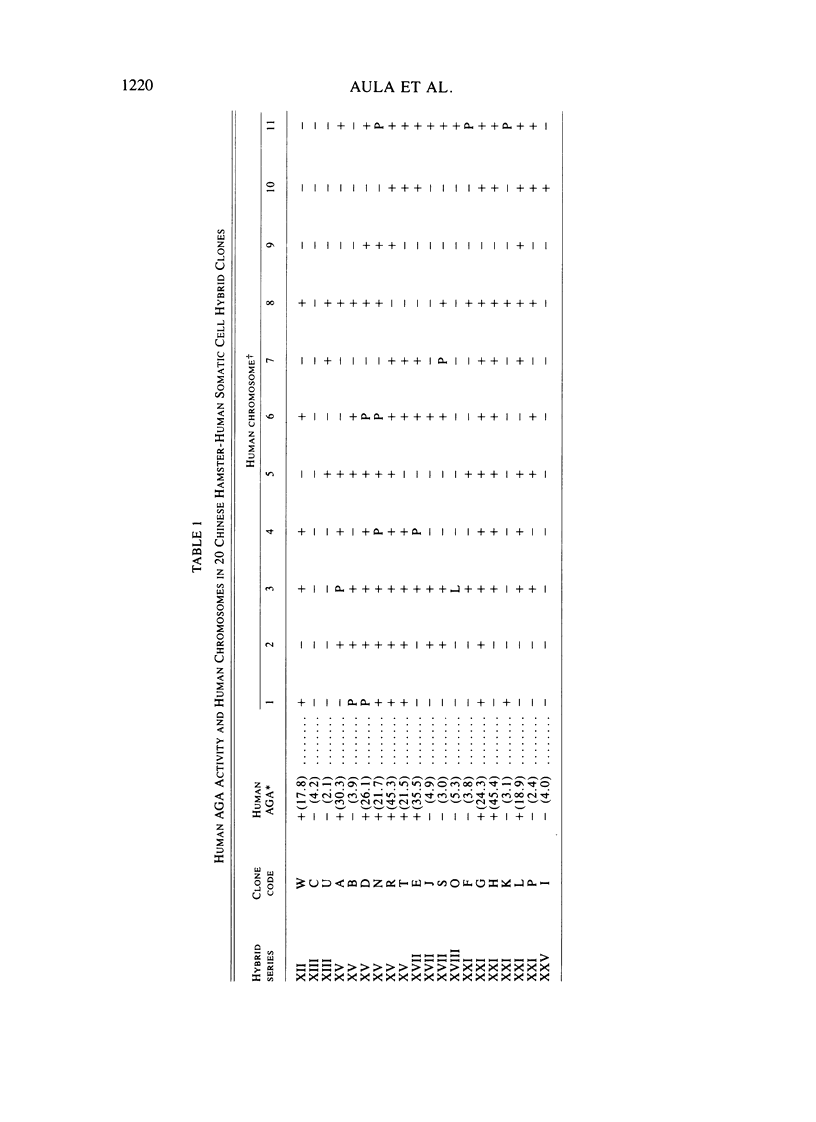
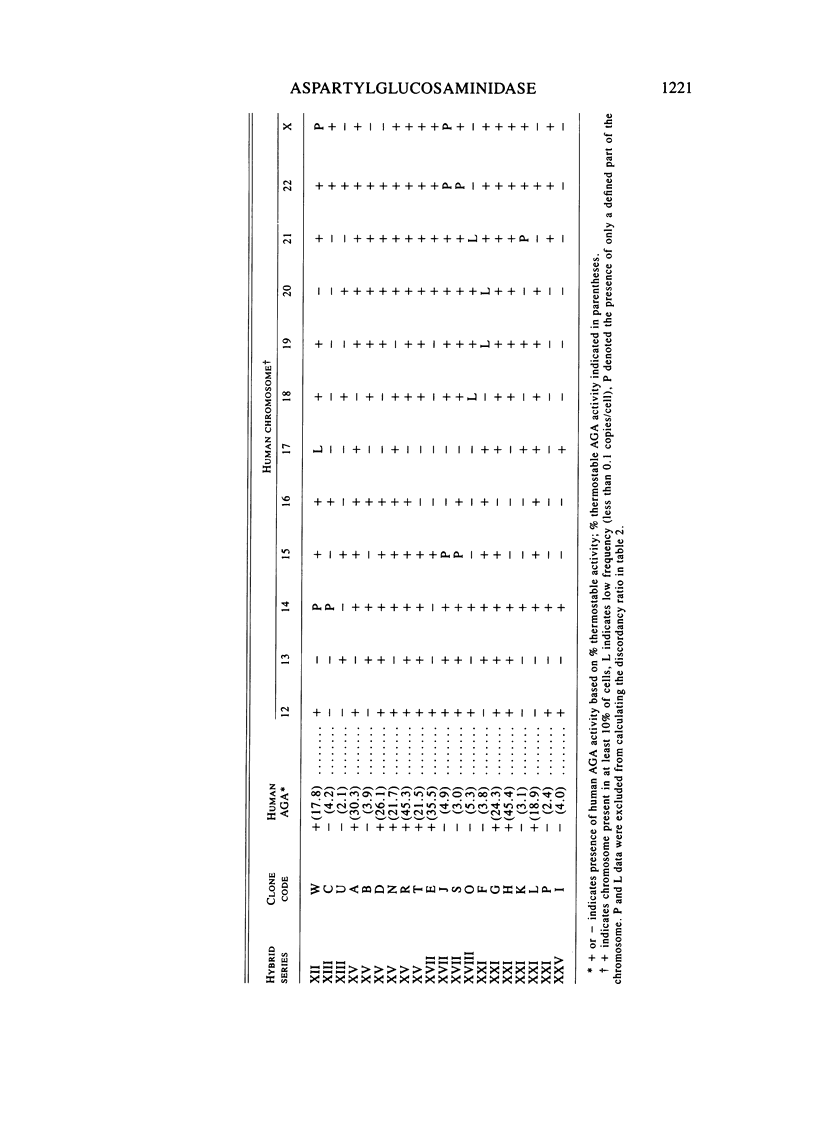
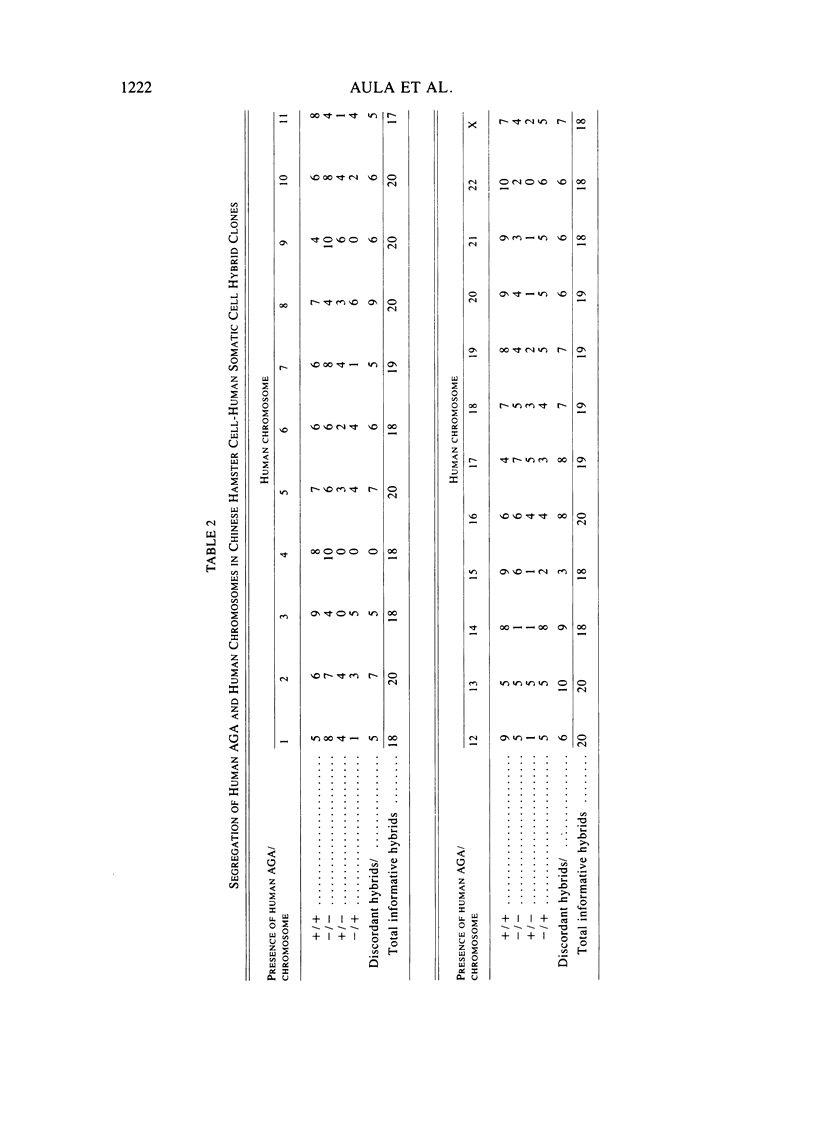
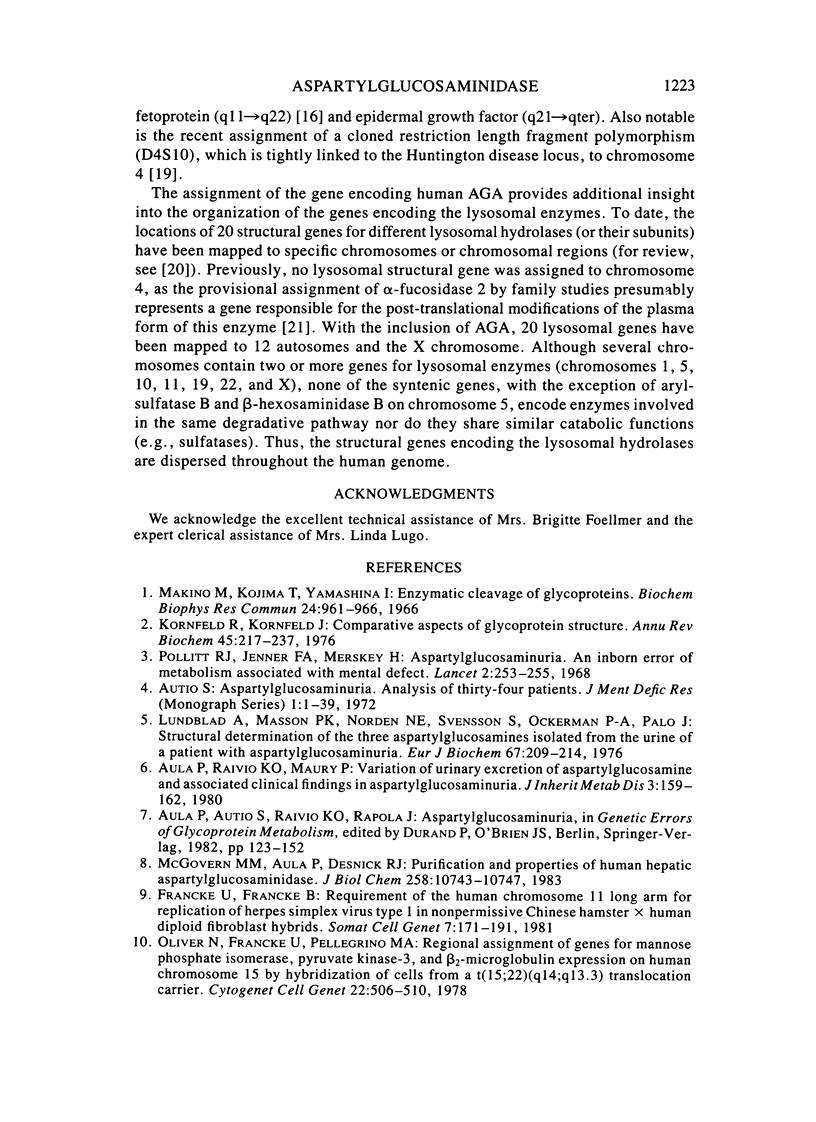
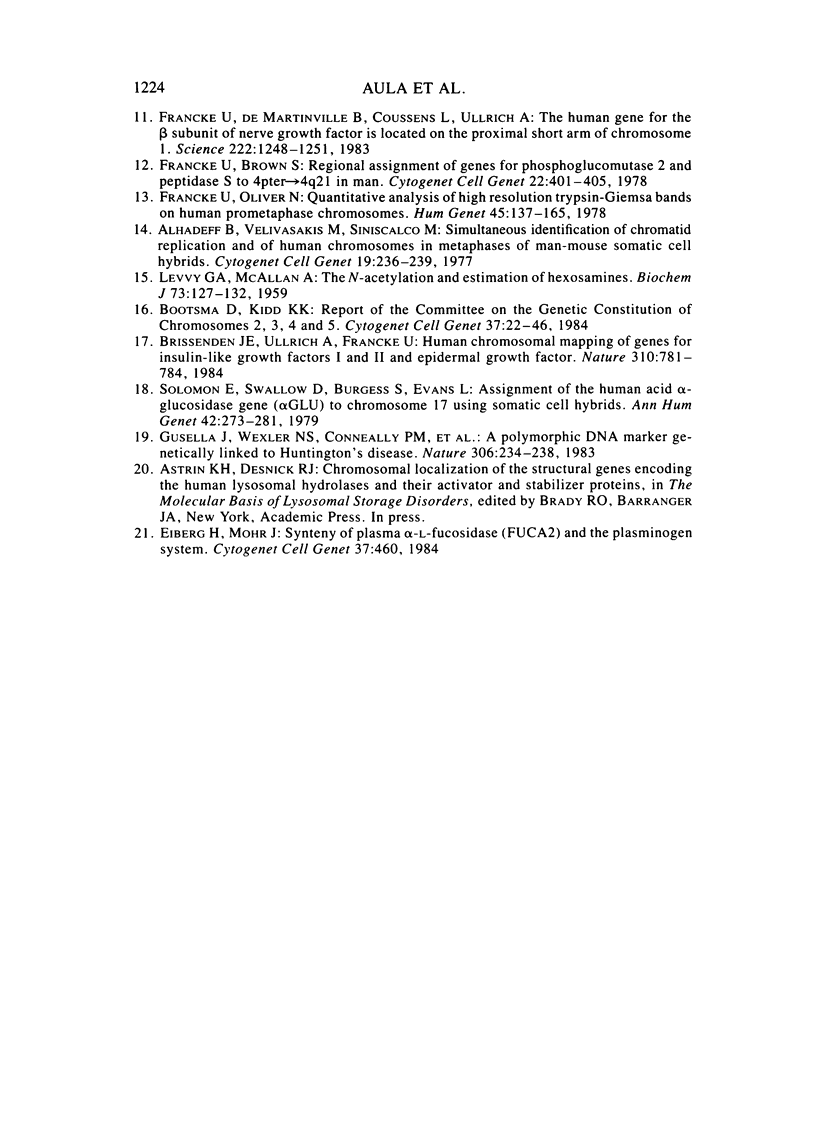
Selected References
These references are in PubMed. This may not be the complete list of references from this article.
- Alhadeff B., Velivasakis M., Siniscalco M. Simultaneous identification of chromatid replication and of human chromosomes in metaphases of man-mouse somatic cell hybrids. (With 1 color plate). Cytogenet Cell Genet. 1977;19(4):236–239. doi: 10.1159/000130814. [DOI] [PubMed] [Google Scholar]
- Aula P., Raivio K. O., Maury P. Variation of urinary excretion of aspartylglucosamine and associated clinical findings in aspartyglucosaminuria. J Inherit Metab Dis. 1980;3(4):159–162. doi: 10.1007/BF02312551. [DOI] [PubMed] [Google Scholar]
- Bootsma D., Kidd K. K. Report of the Committee on the Genetic Constitution of Chromosomes 2, 3, 4, and 5. Cytogenet Cell Genet. 1984;37(1-4):22–46. doi: 10.1159/000132003. [DOI] [PubMed] [Google Scholar]
- Brissenden J. E., Ullrich A., Francke U. Human chromosomal mapping of genes for insulin-like growth factors I and II and epidermal growth factor. 1984 Aug 30-Sep 5Nature. 310(5980):781–784. doi: 10.1038/310781a0. [DOI] [PubMed] [Google Scholar]
- Francke U., Brown S. Regional assignment of genes for phosphoglucomutase2 and peptidase S to 4pter leads to 4q21 in man. Cytogenet Cell Genet. 1978;22(1-6):401–405. doi: 10.1159/000130982. [DOI] [PubMed] [Google Scholar]
- Francke U., Francke B. Requirement of the human chromosome 11 long arm for replication of herpes simplex virus type 1 in nonpermissive Chinese hamster x human diploid fibroblast hybrids. Somatic Cell Genet. 1981 Mar;7(2):171–191. doi: 10.1007/BF01567656. [DOI] [PubMed] [Google Scholar]
- Francke U., Oliver N. Quantitative analysis of high-resolution trypsin-giemsa bands on human prometaphase chromosomes. Hum Genet. 1978 Dec 18;45(2):137–165. doi: 10.1007/BF00286957. [DOI] [PubMed] [Google Scholar]
- Francke U., de Martinville B., Coussens L., Ullrich A. The human gene for the beta subunit of nerve growth factor is located on the proximal short arm of chromosome 1. Science. 1983 Dec 16;222(4629):1248–1251. doi: 10.1126/science.6648531. [DOI] [PubMed] [Google Scholar]
- Gusella J. F., Wexler N. S., Conneally P. M., Naylor S. L., Anderson M. A., Tanzi R. E., Watkins P. C., Ottina K., Wallace M. R., Sakaguchi A. Y. A polymorphic DNA marker genetically linked to Huntington's disease. Nature. 1983 Nov 17;306(5940):234–238. doi: 10.1038/306234a0. [DOI] [PubMed] [Google Scholar]
- Kornfeld R., Kornfeld S. Comparative aspects of glycoprotein structure. Annu Rev Biochem. 1976;45:217–237. doi: 10.1146/annurev.bi.45.070176.001245. [DOI] [PubMed] [Google Scholar]
- LEVVY G. A., MCALLAN A. The N-acetylation and estimation of hexosamines. Biochem J. 1959 Sep;73:127–132. doi: 10.1042/bj0730127. [DOI] [PMC free article] [PubMed] [Google Scholar]
- Lundblad A., Masson P. K., Nordén N. E. Structural determination of three glycoasparagines isolated from the urine of a patient with aspartylglycosaminuria. Eur J Biochem. 1976 Aug 1;67(1):209–214. doi: 10.1111/j.1432-1033.1976.tb10651.x. [DOI] [PubMed] [Google Scholar]
- Makino M., Kojima T., Yamashina I. Enzymatic cleavage of glycopeptides. Biochem Biophys Res Commun. 1966 Sep 22;24(6):961–966. doi: 10.1016/0006-291x(66)90344-5. [DOI] [PubMed] [Google Scholar]
- McGovern M. M., Aula P., Desnick R. J. Purification and properties of human hepatic aspartylglucosaminidase. J Biol Chem. 1983 Sep 10;258(17):10743–10747. [PubMed] [Google Scholar]
- Oliver N., Francke U., Pellegrino M. A. Regional assignment of genes for mannose phosphate isomerase, pyruvate kinase-3, and beta 2-microglobulin expression on human chromosome 15 by hybridization of cells from a t(15;22) (q14;q13.3) translocation carrier. Cytogenet Cell Genet. 1978;22(1-6):506–510. doi: 10.1159/000131009. [DOI] [PubMed] [Google Scholar]
- Pollitt R. J., Jenner F. A., Merskey H. Aspartylglycosaminuria. An inborn error of metabolism associated with mental defect. Lancet. 1968 Aug 3;2(7562):253–255. doi: 10.1016/s0140-6736(68)92355-6. [DOI] [PubMed] [Google Scholar]
- Solomon E., Swallow D., Burgess S., Evans L. Assignment of the human acid alpha-glucosidase gene (alphaGLU) to chromosome 17 using somatic cell hybrids. Ann Hum Genet. 1979 Jan;42(3):273–281. doi: 10.1111/j.1469-1809.1979.tb00661.x. [DOI] [PubMed] [Google Scholar]


